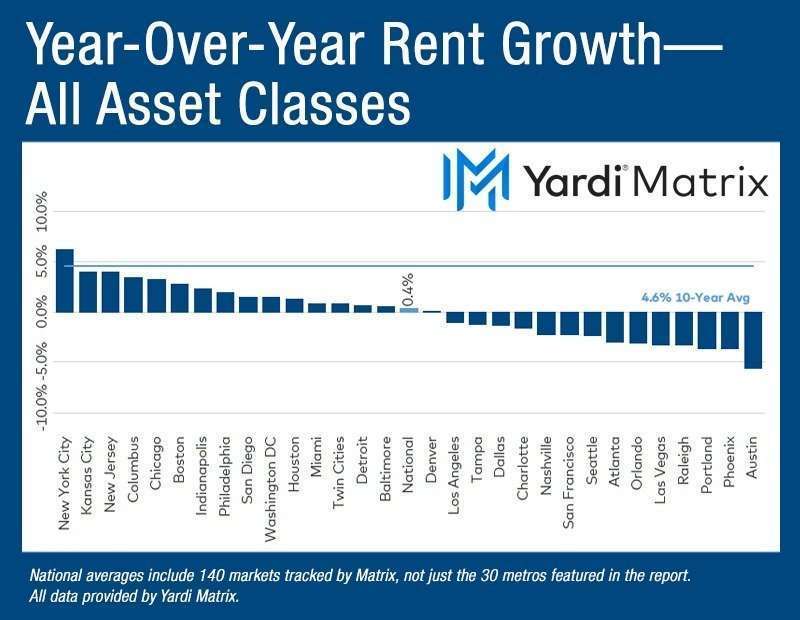eXp Commercial is one of the fastest-growing national commercial real estate brokerage firms. The Chicago Multifamily Brokerage Division focuses on listing and selling multifamily properties throughout the Chicago Area and Suburbs.
Tuesday, January 16, 2024
Chicago Multifamily Brokerage | eXp commercial
Monday, January 15, 2024
1031 Exchange: A Comprehensive Guide

1031 Exchange Rules: A Comprehensive Guide
In the world of real estate investment, savvy investors are constantly seeking strategies to maximize their returns while minimizing tax liabilities. To accomplish these objectives, the Section 1031 of the Internal Revenue Code-authorized 1031 exchange has grown in popularity. This comprehensive guide will provide an in-depth exploration of 1031 exchange rules, shedding light on the intricate details that investors must adhere to for a successful exchange. From understanding the concept of a 1031 exchange to meeting strict deadlines and utilizing qualified intermediaries, we will cover everything you need to know to make the most of this lucrative tax-saving strategy.
First, our Disclaimer: We are not licensed CPAs or attorneys. This article is not intended to provide deal-specific professional advice. This article discusses the general framework of 1031 exchanges. Anyone engaging in this tax strategy should seek professional accounting and/or legal advice.
What is a 1031 exchange?
At its core, a 1031 exchange, also known as a like-kind exchange, is a tax-deferral strategy that enables real estate investors to sell a property and reinvest the proceeds in a similar, like-kind property without recognizing any gain for tax purposes. By doing so, investors can defer the tax obligation associated with any gain, allowing them to reinvest the entire sale proceeds into a new property, ultimately increasing their purchasing power and potential for wealth accumulation.
To qualify for a 1031 exchange, both the relinquished property (the property being sold) and the replacement property (the property being acquired) must be held for investment, business, or income-producing purposes. Personal-use properties, such as primary residences or vacation homes, do not qualify for like-kind exchanges
The Benefits of a 1031 Exchange
The advantages of a 1031 exchange are multifaceted and offer real estate investors unique opportunities for growth and wealth accumulation.
Tax Deferral: One of the most powerful benefits of a 1031 exchange is the ability to defer all taxes associated with a real estate transaction. When selling an investment property, the list of taxes is overwhelming. The most popular is the federal capital gains tax, usually 20%. But this is only the beginning of the list. If the property is located in (or the seller resides in) a state with income taxes, the transaction is also subject to state income taxes; the average state rate is 7.5%. The IRS assumes you have a good accountant who depreciated the property. Most of us do, but even if you did not, the IRS assumes you did and levies a 25% depreciation recapture tax on the amount you deducted (or should have deducted) for depreciation. In addition to these taxes, the IRS also levies a net investment income tax (NIIT) of 3.8% on your profit. Depending on where you live and how long you have owned the property, these taxes can exceed 30% of your sales proceeds. By engaging in a 1031 exchange, investors can defer these taxes, allowing the capital that otherwise would go to state and federal governments to reinvest the full proceeds into a replacement property, thereby maximizing their investment potential.
Increased Purchasing Power: With taxes deferred, investors have access to a larger pool of funds to invest in higher-value replacement properties—properties that better fit the investor’s values and portfolio goals. This increased purchasing power enables investors to upgrade their portfolio, acquire properties with higher income potential, or diversify their holdings to align with their long-term investment objectives.
Portfolio Diversification: 1031 exchanges offer investors an opportunity to diversify their real estate holdings without incurring immediate tax liabilities. This flexibility allows investors to adapt their portfolio to market conditions, economic trends, and changing investment strategies, all while maintaining tax-deferred status.
Wealth Accumulation: By deferring capital gains taxes, investors can compound their investment returns over time, accelerating wealth accumulation and financial growth. As the real estate market appreciates and property values increase, investors can harness the power of compounding to achieve substantial long-term gains.
Understanding 1031 Exchange Rules
To ensure a successful 1031 exchange, investors must adhere to a set of rules and guidelines established by the Internal Revenue Service (IRS). These rules cover various aspects of the exchange, from identification periods to the use of qualified intermediaries:
Like-Kind Property Requirement
One fundamental rule of a 1031 exchange is the requirement that both the relinquished and replacement properties must be of “like-kind.” While the term “like-kind” may sound restrictive, it is relatively broad when applied to real estate. Essentially, any type of real estate used for business, trade, or investment purposes can qualify as like-kind to another. For example, an investor can exchange a residential rental property for a commercial office building or an industrial warehouse for a retail shopping center. The like-kind requirement does not focus on the specific type of property but rather the nature or character of the investment. As long as both properties are held for investment purposes, they generally qualify for a 1031 exchange.
Using a Qualified Intermediary (QI)
A Qualified Intermediary (QI) is a critical player in facilitating a 1031 exchange. As a neutral third-party entity, the QI serves as the intermediary between the buyer of the relinquished property and the seller of the replacement property. The QI’s primary role is to receive the sale proceeds from the relinquished property and hold them in escrow until they are used to acquire the replacement property. Using a QI is mandatory in a 1031 exchange to avoid disqualification of the exchange due to constructive receipt of funds. If the investor were to directly receive the sale proceeds, the IRS would view this as taxable income, disqualifying the exchange. The QI ensures that the exchange is strictly on a like-kind basis and adheres to all 1031 exchange rules.
The first step in a 1031 exchange should be to select your QI. This must be done before you close the transaction on the relinquished property. When selecting a QI, it is essential to choose a reputable and experienced entity with a thorough understanding of the exchange process. The QI should be a qualified intermediary who has no personal relationship with the investor to maintain impartiality.
Identification Period
The IRS imposes a strict timeline for identifying potential replacement properties after selling the relinquished property. Known as the identification period, this timeframe lasts for 45 calendar days, commencing on the date the relinquished property was closed.
During the identification period, investors must identify the replacement properties they intend to acquire. There are two popular identification rules most investors choose from:
a) Three-Property Rule: Investors can identify up to three potential replacement properties, regardless of their value. This allows for more flexibility in finding suitable replacements.
b) 200% Rule: Investors can identify any number of potential replacement properties, but the total value of all identified properties cannot exceed 200% of the relinquished property’s sale price. This rule offers investors more options while maintaining a degree of fairness in the exchange process.
180-Day Exchange Period
Beyond the identification period, investors must complete the 1031 exchange by acquiring the replacement property within 180 calendar days of selling the relinquished property. The 180-day exchange period begins on the date of the relinquished property sale and ends when the replacement property is acquired.
It is essential to note that the 180-day exchange period includes the 45-day identification period. Therefore, investors must act decisively during the identification period to identify suitable replacement properties and move forward with the acquisition process.
One-Property Rule
While investors can identify multiple replacement properties during the identification period, they must ultimately close on one or more of the identified properties to complete the exchange successfully. This rule is known as the one-property rule. Investors can choose one of the identified replacement properties or purchase multiple identified properties, as long as the total value of the acquired properties is equal to or greater than the relinquished property’s sale price.
Holding Period
To qualify for a 1031 exchange, both the relinquished and replacement properties must be held for investment, business, or income-producing purposes. The IRS requires that the investor’s intent for both properties be for long-term investment rather than short-term speculation or personal use.
The holding period plays a critical role in demonstrating the investor’s intent to qualify for the tax-deferred benefits of the 1031 exchange. While there is no specific holding period requirement set by the IRS, investors are advised to hold both the relinquished and replacement properties for a reasonable period to substantiate their intent.
By deferring capital gains taxes and unlocking the potential for increased purchasing power, portfolio diversification, and wealth accumulation, a 1031 exchange empowers investors to make strategic real estate decisions with long-term benefits in mind.
Tips for a Smooth 1031 Exchange
Navigating the rules of a 1031 exchange can be complex, but with careful planning and expert guidance, investors can execute a successful exchange. Here are some essential tips to make the process as smooth as possible:
Plan Ahead: Planning is the cornerstone of a successful 10-31 exchange. Begin considering the exchange long before selling the relinquished property to ensure ample time for property identification and replacement property research.
Consult with professionals: Engage with experienced tax advisors, real estate attorneys, and qualified intermediaries early in the process. Their expertise will help you navigate the rules and ensure compliance with IRS regulations.
Identify Replacement Properties Wisely: During the 45-day identification period, carefully consider potential replacement properties and their feasibility. Be mindful of the specific rules governing the number of properties that can be identified to avoid disqualification.
Choose a Reliable Qualified Intermediary: The Qualified Intermediary is a crucial component of the 1031 exchange process. Selecting a reputable and experienced QI will facilitate a seamless and efficient exchange.
Consider Replacement Property Financing: Ensure that you have access to the necessary funds to acquire the replacement property within the 180-day exchange period. Explore financing options in advance to avoid delays or missed opportunities.If you sell a property for $2 million with $1 million of debt that gets paid off at closing, you must still exchange that property for a property that costs at least $2 million. In the current market, many investors are not prepared for the cost and difficulty of getting replacement financing.
Document Your Intent: Maintain clear documentation of your intent to hold the properties for investment or business purposes. This documentation will be crucial in substantiating your qualification for the 1031 exchange.
Common Pitfalls to Avoid
While a 1031 exchange can be a game-changing tax strategy, there are common pitfalls that investors must avoid to ensure a successful exchange:
Failing to Use a Qualified Intermediary: Attempting to handle the exchange funds directly or using an unqualified intermediary can lead to constructive receipt of the proceeds, disqualifying the exchange. This is an unforgivable sin. Once you take constructive receipt of the funds, your exchange is disqualified. Engage a QI while your relinquished property is under contract.
Missing Deadlines: Strict adherence to the 45-day identification period and the 180-day exchange period is essential. Missing these deadlines can lead to the disqualification of the exchange and tax liability.
Inadequate Replacement Property Research: Rushing through the identification process without thorough research on potential replacement properties may lead to unsuitable investments. Many exchangers begin searching for their replacement property before they even put the relinquished property on the market.
Non-Like-Kind Property Exchange: Failure to invest in a property that qualifies as like-kind can disqualify the exchange and trigger capital gains taxes. You cannot sell a rental property and buy a vacation home. If the replacement property is used for personal purposes, it will not qualify for the 1031 exchange, resulting in tax liability.
Forgetting to Account for Closing Costs: Make sure to account for any closing costs, including title fees and brokerage commissions, to avoid potential boot, which could result in partial taxation.
Conclusion
The 1031 exchange offers real estate investors a powerful tool for deferring capital gains taxes and maximizing investment potential. However, successful execution requires a thorough understanding of 1031 exchange rules, strict adherence to deadlines, and the use of a qualified intermediary. By deferring taxes, increasing purchasing power, and diversifying portfolios, investors can leverage the 1031 exchange to build long-term wealth and achieve their financial goals.
Source: 1031 Exchange: A Comprehensive Guide
https://www.creconsult.net/market-trends/1031-exchange-a-comprehensive-guide/Sunday, January 14, 2024
Forecasters Expect 1% GDP in Foreseeable Future

Forecasters Expect 1% GDP in the foreseeable future.
Three-quarters of the economists think the chance of a recession is a coin flip at most.
The National Association for Business Economists released its December 2023 economic outlook from a panel of 40 professional forecasters. Their take: 2023 will have seen stronger growth than they expected in October, but they think that growth will slow to 1% sometime between now and the fourth quarter of 2024.
A slowdown in growth, by the way, is not necessarily a recession. “Fewer respondents than in the October 2023 Outlook survey expect a recession within the next 12 months, with more than three in four assigning a probability of 50% or less,” said NABE President Ellen Zentner, chief U.S. economist, Morgan Stanley, in prepared remarks. “While most respondents expect an uptick in the unemployment rate going forward, a majority anticipates that the rate will not exceed 5%. Too much monetary policy tightness and broadening conflicts in Ukraine and the Middle East are cited as the largest downside risks for the U.S. economy.”
Looking at core inflation—looking at goods and services absent food and energy because their volatility makes it difficult to find trends—the forecasters largely expected it to continue slowing, but they doubted that it would hit the 2% level the Federal Reserve has been seeking before the end of 2024. The median forecast still sees headline CPI to reach 2.4% year over year by the fourth quarter of 2024.
If correct, that is a counter to market expectations of rate cuts in 2024, at least if the Fed keeps the ground that it has staked out. The central bank has made it clear that there won’t be rate cuts until inflation reaches that 2% level. Counting on a Fed retreat may be counterproductive and lead not only to disappointment but also to poor planning for the future.
But the panelists are largely convinced that even if 2% inflation isn’t in hand, there will be rate cuts. “More than two-thirds expect the [2% inflation] target will be reached in 2025 or later,” NABE Outlook Survey Chair Mervin Jebaraj, director, Center for Business and Economic Research at the University of Arkansas, says in prepared remarks. “Still, more than 80% of panelists believe interest-rate cuts will begin in 2024, with most expecting cuts to start in the second or third quarter of 2024. Expectations for the 10-year Treasury bond yield for year-end 2023 and 2024 are higher than in the October 2023 survey—at 4.6% and 4.1%, respectively.”
Source: Forecasters Expect 1% GDP in Foreseeable Future
https://www.creconsult.net/market-trends/forecasters-expect-1-gdp-in-foreseeable-future/Saturday, January 13, 2024
Single-Family Starts Exceed Multifamily

Single-Family Starts Exceed Multifamily
Single-family permits that start in October 2023 were 13% higher in the U.S. than the prior year
From September to October this year, multifamily starts and multifamily permitting rose in the U.S. as a whole. But on an annual basis, the picture was not so rosy, according to a report by RealPage Analytics.
The seasonally adjusted annual rate (SAAR) for multifamily starts fell 31.8% from last October—"a"much steeper decline than seen in the year-to-date unadjusted starts data,” the report stated. However, the SAAR was up 4.9% from September to 382,000 units.
October permits for multifamily housing also fell 27.8% from the prior year to 469,000 units. But that figure was 2.2% higher than in September.
On the other hand, multifamily completions rose 14.3% from the previous October, though they were down 12.6% in October compared to September to 408,000 units. There was no change in the number of units under construction from one month to the next, but the total of 987,000 was 8.3% higher than the prior year.
“The sharp annual decrease in multifamily permitting brought the SAAR of total residential permitting down 4.4% from last October to 1.487 million units, and multifamily starts were down 4.1% from last year to 1.372 million units,” the report noted.
The annual slump in multifamily permitting was felt in three of the four Census regions: the Midwest, South, and West. The only exception was the Northeast, where permitting rose 28.3% to 56,000 units. In contrast, the only region to see a year-over-year increase in the number of multifamily starts was the Midwest, where they rose 25.9% to 124,000 units. Compared to September, permits were down in the Midwest and West and up in the South and Northeast, while starts were down in the Northeast and South and up in the Midwest and West.
By metro, New York led the nation in multifamily permitting, though the rate slowed from the previous year. Others in the top 10 for permits granted were Austin, Dallas, Phoenix, Houston, Atlanta, Washington, DC, Los Angeles, Miami, and Raleigh-Durham.
The story for single-family housing was somewhat different. Though unchanged from September, single-family permitting and starts in October 2023 were 13% higher in the USA than the prior year, with 968,000 permitted units and 970,000 starts. “Single-family completions were down slightly (-0.9%) for the month but were up 2% for the year to 993,000 units. The number of single-family units under construction was essentially unchanged from September’s pace of 669,000 units, but that was 14.5% less than one year ago,” the blog noted.
Source: Single-Family Starts Exceed Multifamily
https://www.creconsult.net/market-trends/single-family-starts-exceed-multifamily/Friday, January 12, 2024
National Multifamily Report – November 2023

Year-over-year rent growth remained unchanged at 0.4 percent, according to Yardi Matrix.
Year-over-year multifamily rent growth, all asset classes. Chart courtesy of Yardi Matrix
The seasonal winter slowdown led to tepid performance across the U.S. multifamily market, with the average national asking rent declining $6 to $1,713 in November, down for the third consecutive month, according to the Yardi Matrix’s latest survey of 140 markets. On a year-over-year basis, the U.S. rate rose 0.4 percent, unchanged from September. Meanwhile, the occupancy rate remained at 94.9 percent. Rents declined in the SFR segment, too, down $8 to $2,117 in November, for a 0.7 percent year-over-year increase. Occupancy was unchanged in October, at 94.9 percent.
Since March 2020, the average asking rent increased 23.5 percent, boosted by markets in the Sunbelt and the suburbs of primary metros. Examples include low-cost and fast-growing metros such as Knoxville (51.5 percent), Albuquerque (45.5 percent), Savannah (44.9 percent), Charleston (41.8 percent) and Mobile (40.7 percent); second and retirement homes areas such as Southwest Florida Coast (49.1 percent), West Palm Beach (43.3 percent) and Asheville, N.C. and Tucson (both 40.1 percent). Large and expensive markets saw the smallest growth (San Jose (4.0 percent), Urban Los Angeles (10.3 percent), New York City (12.0 percent), Urban Chicago (14.4 percent) and Urban Philadelphia (16.9 percent). More so, Urban San Francisco is the only market with rents below pre-pandemic levels (-2.5 percent).
Rent growth split geographically between gains and losses
Rent performance was uneven across the map but balanced enough between year-over-year gains and losses. Among Yardi Matrix’s top 30 metros, the Northeast and Midwest regions led gains, with New York City (6.2 percent year-over-year), Kansas City (4.0 percent), New Jersey (4.0 percent), Columbus (3.4 percent) and Chicago (3.2 percent) posting the highest advances. In contrast, Sunbelt and West metros lagged. More so, negative rent growth is intensifying, with seven of Yardi Matrix’s top 30 metros posting rent contractions of 3.0 percent or more year-over-year, with most of these located in Sunbelt markets where developers brought online robust volumes of deliveries. Occupancy declined or remained flat year-over-year as of October in all but four markets: Chicago (up 0.4 percent), Denver (0.3 percent), Seattle (0.1 percent) and Washington, D.C. (0.1 percent). Atlanta posted the largest occupancy decrease down 1.3 percent.
On a monthly basis, the U.S. multifamily asking rent declined 0.3 percent in November, down 0.2 percent in the Renter-by-Necessity segment and down 0.4 percent in the Lifestyle segment. Specifically, rent growth was negative in 27 of the top 30 metros in Lifestyle and 20 in the RBN segment. The largest declines in both segments were recorded in Raleigh (-1.1 percent in Lifestyle and -1.3 percent in RBN) and Charlotte (-0.9 percent in Lifestyle and -1.1 percent in RBN). Only five metros posted gains in month-over-month rent growth, led by Kansas City (0.6 percent), New York (0.5 percent) and Houston (0.4 percent). Austin, Nashville and Charlotte led in completions as a percentage of stock, which caused significant rent and occupancy declines.
Renewal rent growth moderated to 6.0 percent year-over-year in September, down 40 basis points from August. With a few exceptions, the highest renewal rents were in metros where asking rents increased, such as New York (8.2 percent), Boston (7.4 percent), Indianapolis (7.2 percent), Kansas City (6.9 percent) and New Jersey (6.8 percent). Bottom-ranking metros were San Francisco (2.5 percent), Phoenix (2.6 percent) and Dallas (3.2 percent)—in these metros asking rents turned negative. Meanwhile, the national lease renewal rate clocked in at 65.2 percent in September, hovering between 64.7 percent and 66.0 percent for the last five months. The highest rate was recorded in New Jersey (81.5 percent) and the lowest in Los Angeles (47.6 percent).
Single-family rents declined $8 in November to $2,115, a 0.7 percent year-over-year increase, down 30 basis points from October, marking the largest one-month decrease in years. Rent growth was entirely sustained by the RBN segment, up 3.2 percent year-over-year, while lifestyle rents slid 0.1 percent during the period. Meanwhile, occupancy stood at 95.9 percent for the fifth consecutive month in October. According to Yardi Matrix’s database, 58,000 SFR properties were under construction in November. Leading in construction pipelines were Jacksonville (2,256 units underway), Orlando (1.365 units), Savannah, Ga. (1.343 units), and Huntsville, Ala. (1,142 units).
Source: National Multifamily Report – November 2023
https://www.creconsult.net/market-trends/national-multifamily-report-november-2023/Thursday, January 11, 2024
Priced out: How cities are scrambling to re-envision empty office spaces as future homes

Priced out: How cities are scrambling to re-envision empty office spaces as future homes
As rising real estate prices have been reshaping homeownership across the country, the commercial landscape has also been going through a drastic shift, particularly in New York City.
Once packed with glass high rises filled with floors of cubicles for big-name financial institutions, tech start-ups, and other Fortune 500 companies, the city's Financial District is now re-envisioning itself as more welcoming to residences, as hybrid work and a shift in commercial real estate preferences have left many properties empty.
This scene is becoming a common one in other metropolitan areas such as San Fransico, Washington D.C., and Chicago not only for the changing work landscape but also because of recent commercial real estate trends that are forcing commercial landlords to reconsider their land holdings.
This has resulted in a solution that some experts say will be more common throughout the country: converting those office spaces into residential apartments.
For some cities, this is not a new phenomenon.
In the wake of 9-11, New York began rezoning more properties in the Financial District, which realtors rebranded as "FiDi" to attract new residents. But experts say there has been a bigger push since the pandemic ended.
John Cetra, a well-known New York architect, is currently working on a plan to convert 55 Broad St., which once housed Goldman Sachs, into nearly 600 market-rate apartments as part of a $172 million development deal that was approved in July.
Nearby, he's also converting an office building that once housed J. P. Morgan Chase into a 1,300-apartment building.
"What we're seeing now is this kind of acceleration of these buildings from the 50s, 60s, and 70s that are, that are being converted," Cetra told "Start Here" during a tour of the construction site.
Cetra said landowners are rushing to get people inside their properties because they are losing hundreds of millions of dollars a year from the lost rent that is typically used to pay for their mortgages.
Most developers obtain big loans to finance commercial properties and due to low interest rates, they would pay off their mortgage with another loan.
The recent rise in interest rates has forced commercial landowners to reconsider this strategy and the debt has been adding up and the rents to pay them down dwindling. Roughly $1.5 trillion in commercial real estate loans are coming due soon according to the finance analysis group Trepp.
Certa said there is a real chance that some big companies will default on their loans.
"They're looking at it and saying…it's not worth what we thought it was worth," he said of the companies. They might walk away from some of these properties and say, 'I can't pay the debt service. So Mr. Banker, take it back.'"
Chuck Blozies, a San Francisco-based architect, told "Start Here" that his city, which has an office vacancy rate of nearly 40%, has seen a rise in commercial foreclosures.
That, in turn, can create what's known as a "doom loop": empty buildings lead to less tax revenue, which forces the city to cut back on public services. These cutbacks lead to the city being less attractive to businesses and workers, which leads to more vacancies.
"Of course, when the pandemic hit us, it was easy for [tech workers] to work from home," he said.
"I think the consensus is that office use, the way it used to be, is just never going to come back," he added.
Blozies has been leading several commercial to residential conversions in San Fransico and noted that it takes a lot of work to make it a livable space that complies with safety codes.
For example, typically many office rooms are deep within the floor plate and don't require windows for lighting and air, which is mandatory for an apartment. Blozies also pointed out how plumbing for commercial properties also presents architects with a problem.
"Office buildings have, typically, bathrooms ganged in the middle of the building. Residences have bathrooms all over the place. So you essentially need to take the building apart to do plumbing upgrades," he said.
Certa said New York City office towers, with huge floor plans and vast "dark spaces," present obstacles that forced his team to rethink traditional apartment layouts.
"Because of the size of the floor plates, the apartments get kind of long and narrow, but every apartment will have windows, and then they'll have home offices as well, plenty of closet space [and] everything that you'll need in an apartment," Certa said.
Bloizes said he is thinking outside of the box for ways to reuse the dark space in some of his design ideas, including a space where future self-driving cars can enter and exit the building.
"You need an elevator to get them up there, kind of drive in one side, get cleaned up and repaired on a conveyor belt kind of idea, and then drive out again to pick up their next fare," he said.
Although experts say the return on investments for the converted buildings is higher compared to an empty office building, there still is a major cost issue that trickles down to renters.
Due to the expensive nature of the conversion work, many of the apartments are listed as luxury units.
At the same time, neighborhoods that have seen commercial to residential conversions have also adapted. New York's Financial District, for example, has seen a growth in restaurants, shops, event venues, and other businesses that are now catering to the new population.
Some of the neighborhood's residents, like Stephanie Tronis, told "Start Here" they plan on staying there for a long time.
"It's quiet on the weekends. I love that. It's busy enough during the week that it feels like it's a neighborhood, but then on the weekends, it's, it's pretty quiet, which I enjoy," she said.
Source: Priced out: How cities are scrambling to re-envision empty office spaces as future homes
https://www.creconsult.net/market-trends/priced-out-how-cities-are-scrambling-to-re-envision-empty-office-spaces-as-future-homes/Wednesday, January 10, 2024
Don’t Get Left Behind: Now is the Time to Invest in Multifamily

Don’t Get Left Behind: Now is the Time to Invest in Multifamily
Market conditions continue to change at a pace rarely seen before, providing significant opportunity but also uncertainty. So how do you know when to invest and what to invest in to deliver the best risk-adjusted returns? It comes down to picking the right time, the right assets, and the right partner.
Major newspapers like The Wall Street Journal have run article after article on why the top industry players are lining up billions of dollars to swoop in and buy commercial real estate at deep discounts. The impact of rapidly rising interest rates on property values should present buying opportunities that we haven’t seen since the Great Financial Crisis, and you don’t want to get left behind. Aligning yourself with managers who can pick the right investments will be the key to ensuring you don’t miss out on this wave of opportunity.
Picking the right time—and why that time is now
Several market factors are currently aligning to create what should be some of the most promising investment opportunities since 2009. The recent disruption in capital markets, coupled with the rapid increase in interest rates, is starting to force many property owners to either invest significant new capital or sell their assets. Owners who secured variable-rate debt in recent years are grappling with interest rates that have tripled, substantial increases in reserve requirements, and a steep reduction in operating cash flow. As more and more owners face looming debt maturities or loan rebalances with limited access to liquidity or the ability to refinance, well-capitalized managers will be able to swoop in and acquire these assets on an attractive basis.
Many of these assets will be well-located, high-quality, and strong-performing, but they will come to market not because of inherent underlying issues with real estate but rather because of the current liquidity constraints and the immediate cost implications of near-term debt. We believe this buying window will be relatively short while prices reset, and investors positioned to seize on that window could achieve outsized risk-adjusted returns.
Picking the right assets: resilient and inflation-hedged
Commercial real estate remains a highly favored investment class, and multifamily stands above the rest. Historically, multifamily has maintained its status as the best-performing and most resilient asset class through economic cycles. One of multifamily’s key attributes is its role as an inflation hedge. Multifamily landlords have the flexibility to adjust rental rates on a weekly basis, typically with lease terms not exceeding 12 months. This adaptability becomes especially valuable as inflation rates climb, enabling multifamily property owners to consistently reset rents and align them with the prevailing economic conditions, thus offering an additional layer of protection against downside risks.
Some of the most promising multifamily investment opportunities are expected to emerge in gateway markets. These supply-constrained markets represent a flight to quality and boast strong underlying fundamentals that continue to flourish. Multifamily assets situated in supply-constrained markets, such as those found in the Western U.S., are well-positioned for possible sustained rent growth. These markets, unlike some others like those in the Sunbelt region, face a lower risk of near-term oversupply, making them highly attractive prospects for investors in these volatile times.
Picking the right partner—experience matters!
In many ways, who you invest with is just as important as what you invest in. Investors need to do their diligence and pick a manager with a proven track record of success that spans multiple market cycles. While many operators have had success over the past decade, it is important to separate managers who added value at the real estate level from those that just rode the wave of rising market conditions. As Warren Buffet famously said, “only when the tide goes out do you discover who's been swimming naked.”
Successful investors will be those who can identify and avoid those skinny dippers by partnering with shops that have a proven track record of success over the past 20-plus years through recessionary periods and recovery phases.
Thorough due diligence on operators is paramount to ensuring you align yourself with managers that can adapt to shifting market conditions and capitalize on rapidly emerging opportunities likely to arise in the next 12 to 18 months. Equally important is ensuring that operators' interests align with yours. One effective way to achieve alignment is to prioritize straightforward and transparent partnership structures that offer ample downside protection. This may include arrangements such as avoiding promote crystallizations, ensuring the sponsor has sufficient co-investment in the fund, and crossing waterfalls so the sponsor doesn’t make a profit until investors have earned a return on their entire investment, among other strategies.
Picking the investment structure: the value of tax benefits and transparency
Lastly, seeking investor-friendly structures can be extremely beneficial to investors. We favor closed-end funds because you can earmark capital that helps ensure the fund has sufficient dry powder to move quickly to take advantage of distressed deals and can do so at the right time. This structure allows investors to gain exposure to a diversified portfolio through a single investment with crossed waterfalls and take advantage of the tax benefits afforded real estate investments.
The tax benefits of commercial real estate are also highly attractive when compared to other investments. Through a closed-end structure, you can shield investment income and/or receive a tax loss against other capital gains using depreciation. This allows you to defer ordinary taxes during your hold and not have to repay those amounts until sale, and generally they are recaptured at advantageous rates. Real estate investments have no limit on interest deductions, unlike some other investments, so you also get the full tax benefit of leverage, which is even more advantageous in a higher-rate environment.
How to come out a winner
Now may be an especially favorable moment for family offices and high-net-worth investors to invest in commercial real estate, specifically multifamily. We think the opportunities over the next 12 to 18 months could mirror—or even exceed—those coming out of the Great Financial Crisis, when highly successful investors were able to scoop up strong-performing, well-located assets at deeply discounted prices. With several institutional investors sidelined because of their internal challenges related to allocation issues, redemption requests, or a lack of liquidity in their other investment holdings, now is the time for family offices and HNW investors to capitalize on the distress.
Thoughtful investors who act now to pick managers that have the expertise to identify opportunities, apply appropriate risk-reward assessments, and effectively execute their business plans to enhance value are likely to emerge as the victors in the coming years.
Source: Don’t Get Left Behind: Now is the Time to Invest in Multifamily
https://www.creconsult.net/market-trends/dont-get-left-behind-now-is-the-time-to-invest-in-multifamily/eXp Commercial Presents: The 2026 CRE Economic Outlook Navigating the 2026 commercial real estate landscape requires a strategy grounded in ...
-
Just Listed: Golf Sumac Medical Offices | Des Plaines IL Price: $3,900,000 SF: 35,245 Stories: 3 Occupancy: 82.3% Cap Rate: 9.63% * Stabiliz...
-
REGISTER TODAY The Commercial Real Estate Symposium will provide junior and senior agents and brokers with valuable insights ...
-
🚨 Office Condo For Sale – Bartlett, IL 📍 802 West Bartlett Road, Bartlett, IL 60103 💰 Listed at $299,900 Unlock the opportunity to own a ...